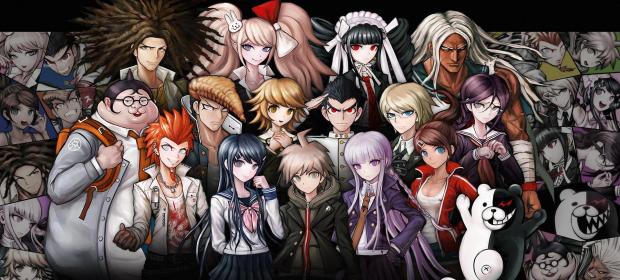As I began Danganronpa, potential adjectives started to fall like rain on my dreary old-man face: pretty, funny, unique – but most importantly, interesting. I was growing tired of carbon copies, cut and paste design, the boredom born of the repetitive grind. And then the translated version of a Japanese PSP game arrived to save me.
It’d be doing it a disservice to try and distil what Danganronpa: Trigger Happy Havoc is, into an easy to market series of buzz words and similes, but this is the internet, so I will at least try. If you took Phoenix Wright and mashed it up with Virtue’s Last Reward, then sprinkled in the Japanese Persona 4-like characters and relationship growth, you’ve got Danganronpa. And yes, you can take a break from reading this to order it right now; I’d be doing the same based on that comparison.
Taking the role of seemingly average student Makoto Naegi, you are lucky enough to have won entry to the most prestigious school around. The rumour goes that if you graduate from Hope’s Peak Academy, you will be set for life – such is the high-level education on offer. But only the cream of the crop are accepted, so Makoto’s schoolmates are the “ultimate” in their chosen field. Quickly the story accelerates, and you are suddenly waking in an empty classroom, the doors and windows locked and bolted. It’s here we meet Monokuma.
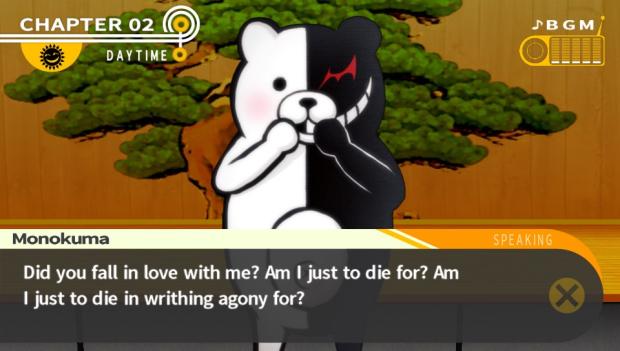
A remote-controlled bear (there’s that Persona 4 nod), Monokuma is an utterly insane, violent sociopath of a bear. He’s also your headmaster, and informs you that you are all stuck here forever unless you graduate. The catch there is that graduating is only achievable by killing one of your class-mates. But it’s not that simple, because even if one of you chooses to murder the other, you must face a courtroom-style judgement. If the accused student fails to convince everyone of their innocence, they will themselves be killed. It’s dark and cruel, with Monokuma instilling a cold hard dread into you, but interjected with real moments of ridiculous humour – but it’s just so totally engrossing that you’ll lose hours to it very quickly indeed.
Inbetween all of this drama, relationships are formed and friendships made. While you move around in a 3D world that is the school, exploration is truly achieved by clicking the environment and having plenty of chats with the other characters. It’s worth mentioning that if you don’t like dialogue-heavy games, then you’re going to find it almost impossible to enjoy Trigger Happy Havoc, as huge stretches will be spent simply pressing X (or tapping the screen) to cycle through conversations.
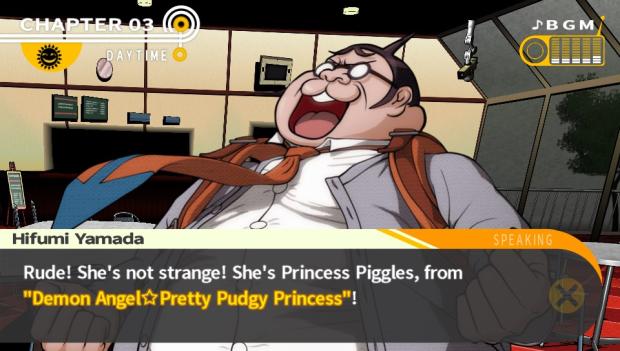
Most of the character development will be done through the story, but it’s vital (and Spike Chunsoft go out of their way to tell you how important this is) that during “free time” you explore the available areas and chat to the other people in the school. Do you choose to get romantically-attached to a certain female character early on (as I did) only for them to be cut down in the prime of their young life, or do you just be “one of the lads” and chill out with your fellow bros?
Regardless of what you do, at some point someone will die and the game switches to Deadly Life mode, whereby it becomes a full on investigation and you’ve got to find as many clues to the culprit as you can, before the class trial takes place. Charged with firing truth bullets (and seriously, props for the use of that term) into the suspect’s argument, you have to find the holes in their story, and essentially make the truth come out. Similarly to the Ace Attorney series, you have to interject with your theories. These trials get progressively harder as the game goes on, but it’s never particularly hard overall, and a trial and error element will save you if struggling. That said, you’re graded on each trial section, so there’s an incentive to do well.
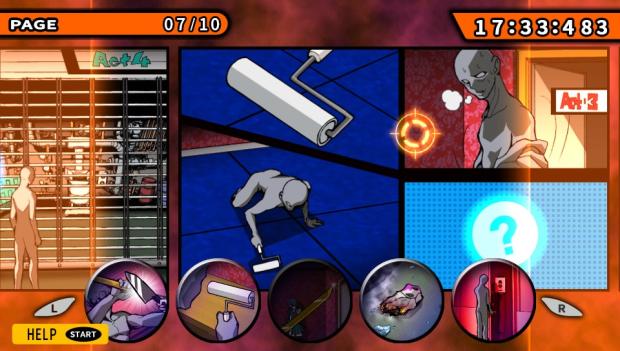
Culminating in a comic-book style rundown, you have to put together all the evidence and watch it play out, but even then the defendant will refute the evidence and a rhythm-style mini-game will play out before you eventually succeed and get to watch bizarre or gruesome punishments for the guilty.
The best thing about the trials is that they continue to surprise you, story-wise. At one point I was absolutely certain I’d thought outside the box enough to work out the killer. Despite protestations of an obvious culprit, no, I had Danganronpa’s number. Or not, as it turned out the obvious choice was wrong, but so was I. Continuous curve-balls stop the story from every growing boring.
Danganronpa looks fantastic, and the character models look like paper cut-outs placed on a 3D backdrop. In fact, there are few times where it’s obvious that this is a PSP game at heart. Whether watching animated cut-scenes, or just exploring the school halls, this is a lovely looking game, with well designed characters and environments. The main positive to the Vita release is that you can simply touch where you want to explore, rather than using the analog sticks to move an on-screen reticule. Also new to the Vita is an alternate version of the game that is unlockable after completion. It’s a nice addition as the storyline is such that you probably wouldn’t replay it a second time otherwise.
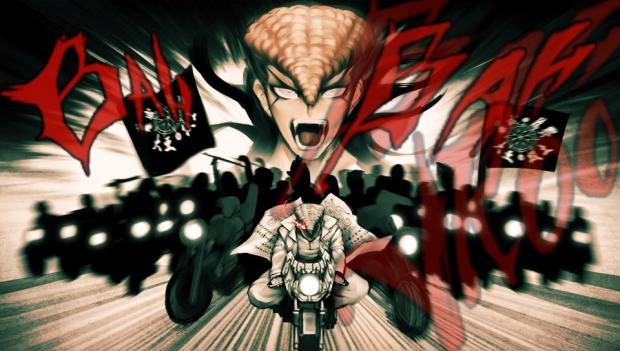
One thing worthy of special note is the soundtrack. Utterly fantastic, there’s a cheery theme that got stuck in my head for days. But it’s also dark and oppressive when it needs to be. This is a soundtrack that collectors are going to want to own. Furthermore, the translated voice acting is surprisingly good. The option to switch back to the original Japanese voices is a welcome one, but there’s nary an irritating voice to be found, here – though of course, mileage may vary for you.
VERDICT: Games of this ilk are rarely for everyone, but this is a unique experience that really stands out – even in the Vita’s burgeoning library. Tripper Happy Havoc will last you a good 25 hours or more, but will keep you thoroughly captivated throughout with its mix of interactive storytelling, exploration, detective gameplay, interesting characters, and plot twists.

SUPERB. This is the mark of greatness, only awarded to games that engage us from start to finish. Titles that score 9/10 will have very few problems or negative issues, and will deliver high quality and value for money across all aspects of their design.
Review code provided by publisher.


